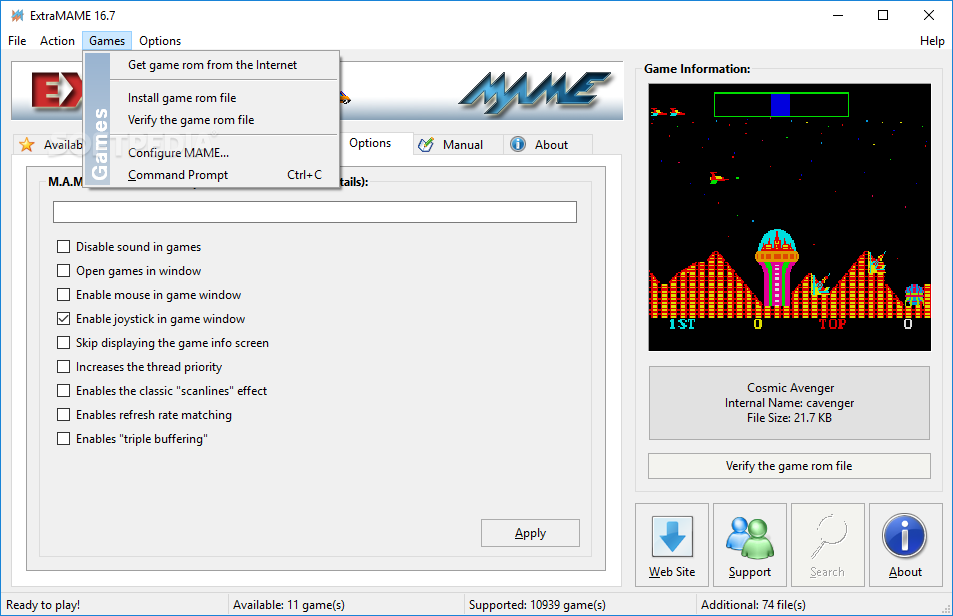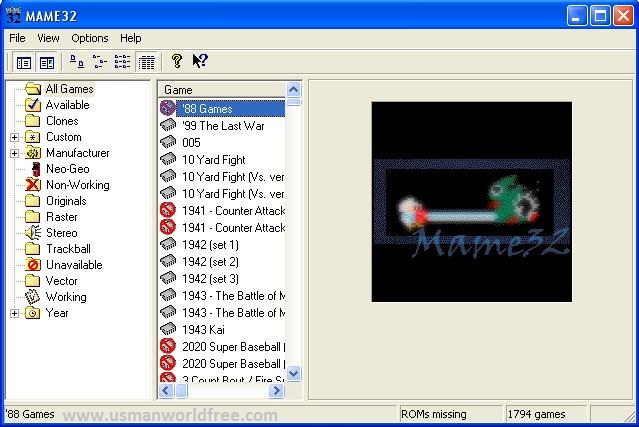

- #Audit all games mame os x install
- #Audit all games mame os x manual
- #Audit all games mame os x zip
- #Audit all games mame os x download
Then opening a Terminal window and dragging “mame64” to it, pressing enter and I get a brief black screen as if emulater is opening and quicly shuts down giving me the error notice in the Terminal window. I only moved the unzipped MAME folder to Applications, as instructed.

This is enough to get you up and running, and there are lots of resources on the web for using MAME beyond the basics. Remember to setup Input Options (General) or per game, to make sure you can use your chosen controller. You can use your mouse or cursor keys to navigate the menus once launched, and press TAB in-game to bring up the options screen. Put unzipped game ROMs in the roms folder within the mame folder, and unzipped samples in the samples folder.

I found this after I’d been running MAME from the command line for a while (if you want to do it this way, the easiest is to open a Terminal window, drag the mame64 icon to it, and press enter). It’s just a double-clickable application that will launch MAME. Unzip it, and put it in your new MAME folder.
#Audit all games mame os x download
Next, to make things easy, download a useful little application called M64, here. Once that’s done, unzip the MAME release you downloaded, and copy it to your Applications folder.
#Audit all games mame os x install
Open the DMG, and copy the amework to /Library/FrameworksĪlternatively, you can install it in /Library/Frameworks if your access privileges are not high enough. You can download the latest version here.īefore you try and use it, though, you need to install the SDL2 framework, download it here. Thankfully, r0ni works really hard at maintaining a version of MAME that runs natively on OS X (via Command Line, it has no windowed GUI). It works great for most games, but you need to compile your own binary to get sample support for games like Zaxxon, and you can’t get access to the DIP switch settings for games, or advanced configurations. Download the samples from the MAME website, and place them in this directory.The free OpenEmu is great for running all sorts of emulators on your Mac with a beautiful frontend, and I heartily recommend it for consoles and computers, but its MAME support is classed as ‘experimental’ – indeed, you need to download a separate build to get MAME supported at all. To overcome this, samples have been obtained from the original games, instead. A subdirectory the same name of the game is created, and all screen shots for that game are placed there. Screen shots created by using F12 are placed in this directory.
#Audit all games mame os x zip
They do not need to be uncompressed, and the zip files can be stored directly this directory. Persistent cache of favorites, play stats, audit state, etc. Hard disk images, often called CHDs for compressed hard disk, should be placed in this directory. A visual effect can be a PNG image that is used as an overlay or a Quartz Composer composition. Since hard disk images are quite large, it is more efficient to only store the differences, hence the name "Diffs". This directory stores modifications to hard disk images. Place these configuration files in this directory. Some dedicated control panels are provided with configurations files for proper key mappings. MAME uses this to store global and per-game options. This file is not included and may be found on the Internet. These images can be obtained from the MAME website.Įnables various cheats and hacks. This can't be emulated in any other way than having the actual image and putting it to the screen in the emulator. Some of the actual arcade machines had images inside them, which were projected into the screen. Here is a description of these files and directories (directories end in a slash): MAME OS X creates and uses various files and directories in: $/Library/Application Support/MAME OS X
#Audit all games mame os x manual
Support Files and Directories MAME OS X Manual > Contents > Support Files and Directories Support Files and Directories


 0 kommentar(er)
0 kommentar(er)
